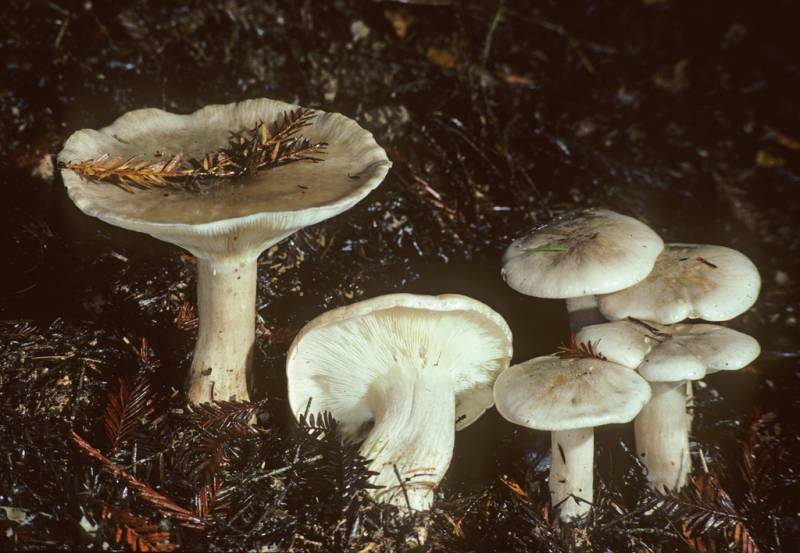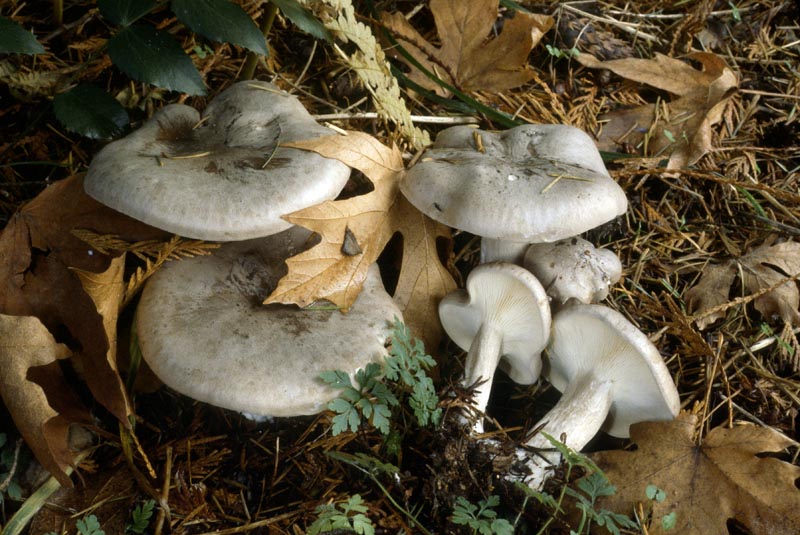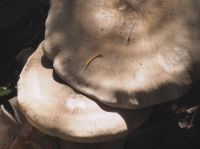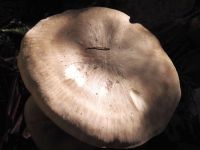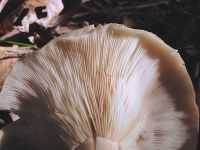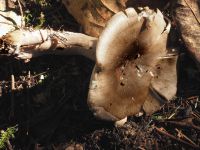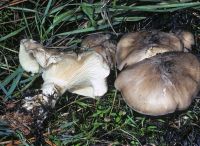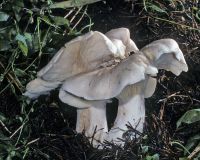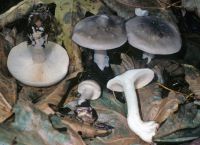Distribution: A variety of forests, often appearing along woodland trails late in fall
Conservation Status: Not of concern
The cap is broad with an incurved edge, and is grayish to brownish gray with radiating fibrils on the margin. The gills are whitish, adnate to short-decurrent, close, and often forked. The stipe is large, fleshy, and enlarged at the base, with a whitish surface that is coated with light gray-brown fibrils. C. nebularis usually has an unpleasant odor, described as like skunk cabbage or rodent cages, or just strongly farinaceous; however, sometimes an odor is lacking. It is among the largest of clitocybe-like mushrooms, another being Leucopaxillus giganteus (Sowerby: Fries) Singer, which differs primarily by its whiter color and amyloid spores, and C. geotropa (Bulliard) Quélet which has a buff to pale pinkish brown cap.
Sources: Trudell, Steve and Joe Ammirati. Mushrooms of the Pacific Northwest. Portland, Timber Press, Inc. 2009.
PNW Herbaria: Specimen records of Clitocybe nebularis in the Consortium of Pacific Northwest Herbaria database
CalPhotos: Clitocybe nebularis photos

